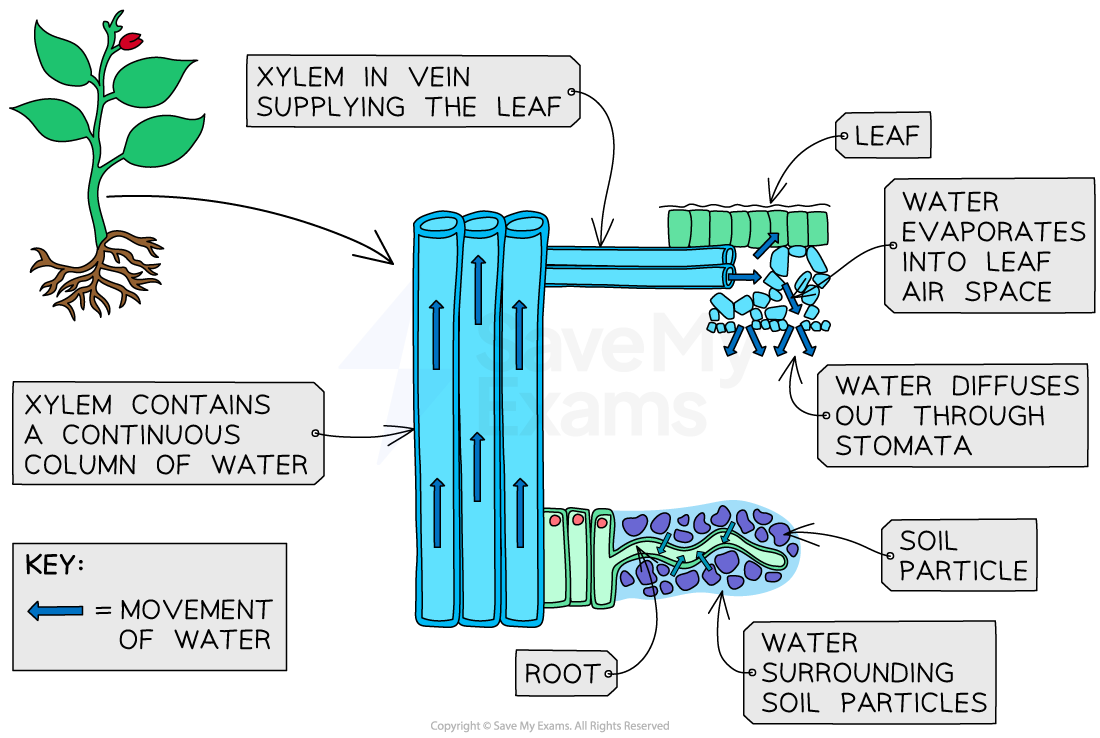Transpiration (SQA National 5 Biology): Revision Note
Exam code: X807 75
The process of transpiration
Transpiration can be defined as
the loss of water vapour by evaporation from the leaves of plants
Water evaporates from the surface of cells that line the air spaces inside leaves before exiting by diffusion
Water diffuses out via the stomata
More water is drawn up the xylem to replace the water that is lost in transpiration, ensuring a continuous stream of water inside the xylem
This upward movement of water is known as the transpiration stream
This supplies water to leaf cells for photosynthesis, as well as bringing dissolved minerals from the soil

Factors affecting transpiration
The rate at which transpiration occurs is affected by several environmental factors
Environmental factor | Effect on transpiration rate | Explanation |
|---|---|---|
Wind speed | As wind speed increases, the transpiration rate increases | Wind moves water vapour away from the leaf surface after it diffuses out of the stomata; this increases the water vapour concentration gradient between the inside and the outside of the leaf |
Humidity | As humidity increases, the transpiration rate decreases | Humid air contains a high concentration of water vapour, decreasing the water vapour concentration gradient between the inside and the outside of the leaf |
Temperature | As temperature increases, the transpiration rate increases | At high temperatures water vapour molecules have more kinetic energy, increasing the number of water molecules that diffuse out of the stomata per unit time |
Surface area | As leaf surface area increases, transpiration rate increases | A larger surface area means more stomata from which water can evaporate, leading to a higher rate of water loss |

Unlock more, it's free!
Did this page help you?